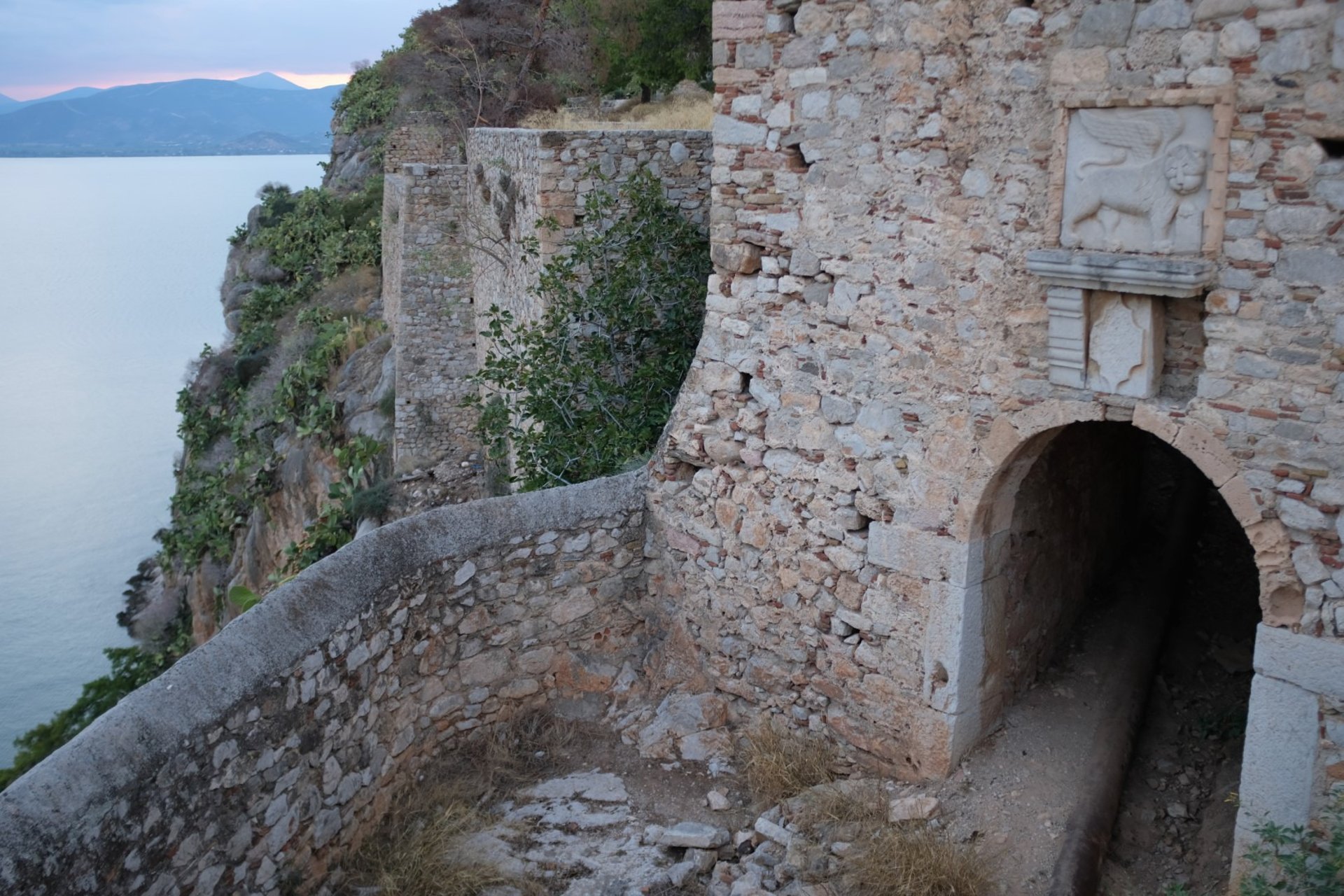
Door to the Morea
2018, Peloponnese, Corinth, Acrocorinth, Epidavros, Nafplion
EUROPEGREECEARCHAEOLOGYMUSEUMS
The first case of industrial espionage in recorded history happened in the sixth century. There was a pair of wily Nestorian monks who had travelled all over Asia, and when they returned home to Europe they were packing a notion. Cool as you please, they got an audience with the Byzantine emperor Justinian and pitched him the ultimate caper; these two chancers would steal the secret of silk production from China. They must have been good salesmen, or Justinian must have had a sense of humour, because the mission was approved. Several years later and true to their word, the monks returned having successfully smuggled silk worm eggs out of the East. Before they had even set out from Constantinople they had planted mulberry trees there, the favoured food of the silk worm, and soon the Byzantines had established their own silk industry and broken the global Chinese monopoly. One of the new centres of Byzantine silk production was to be the southern peninsula of Greece, the Peloponnese. In the Middle Ages it became so associated with silk that its name changed, and for a few centuries the Peloponnese was known instead as the Morea, from morus, the mulberry.
Some backstory
At any rate we were doing better than Diogenes, the ancient philosopher who lived here in a barrel. Not that the man let that get him down, either. A statue a little way up the beach from us commemorated the famous anecdote concerning himself and a young Alexander the Great. The mighty prince came looking for the philosopher in Corinth, and found him leaning against his barrel, sunning himself. Alexander asked him if he could do anything for him, and Diogenes replied, disdainfully, "Yes, stand a little out of my sun". Alexander was impressed by the old man's brazenness, and as he walked away he remarked to his entourage that if we were not Alexander, he would like to be Diogenes. Diogenes fired after him that if he himself were not Diogenes, he would like to be Diogenes too.
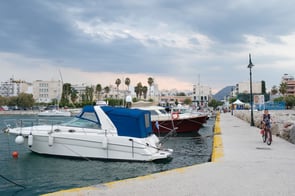
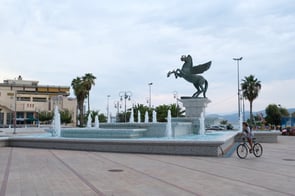


Dad and I crossed the narrow isthmus which anchors this land to Greece on a train from Athens, maybe echoing the two bearded wanderers in looks, if not quite in foresight or planning. The idea was to stop in Corinth and use it as a base from which to see the sights of southern Greece, but soon after we arrived we learned that any organised tours were departing from the capital. In time though it turned out we'd landed on our feet after all. Our accommodation stood right beside a pleasant beach with a grand view across the Gulf of Corinth, where we could swim and fill up well on souvlaki and seafood. I'd heartily recommend the selection at Kalámia, a little restaurant by the strand. We washed down the food with an ouzo, the clear anise flavoured spirit which will turn cloudy with the addition of an ice cube. On our first evening drying off from the swim and digesting the local fare, we were treated to the natural fireworks of a distant thunderstorm out over the water, and we a safe distance from the rain.
Corinth marina
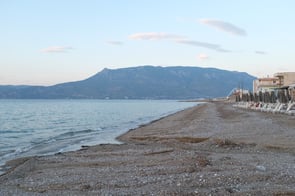
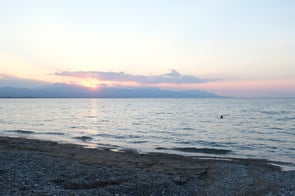


Corinth beach
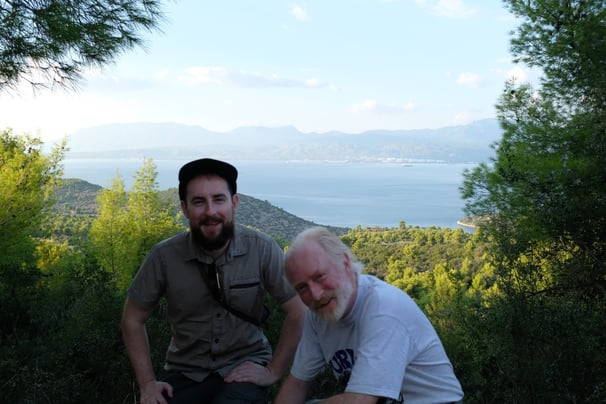

View of the Saronic Gult at Epidavros
Our luck continued to turn when our friendly host Vasilis offered to take time off work and drive us out to most of the points we'd plotted on our itinerary. We nearly had to force him to take some money for it later. Our first stops were in the old Corinth, a few kilometres past the outskirts of the new. The city today is a modest one, only a shadow after the enduring grandeur of its antique name. Once upon a time it was a major polis of ancient Greece and later the Roman empire, strategically located between the Peloponnese and the rest of mainland Greece and perched between the Saronic Gulf and the Gulf of Corinth. For hundreds of years the city operated a rudimentary form of railway, the Diolkos, to transport ships overland between the two bodies of water and thus avoid the time-consuming circumnavigation of the peninsula. This unique innovation earned the locals an idiom for a while; "as fast as a Corinthian". You might not have heard of that one, but people still talk about Corinthian columns, Corinthian helmets, and the letter to the Corinthians, thanks to the city's involvements in construction, destruction and instruction respectively. Before our road trip we'd walked a bit around the modern city's docks, coming across a fountain and statue of the Pegasus, the legendary winged horse. Now with the car we flew up far above it to Acrocorinth. This height above the city has been occupied since ancient times, but today it's defined by the medieval castle built and added to by the Byzantines, Frankish crusaders, the Venetians, and finally the Ottoman Turks, all in the interests of making an already highly defensible spot basically impregnable. The fortifications amble up several levels of elevation, and the views from the top are spectacular. We only met a handful of other tourists inside the walls. I found it interesting to look out for the marks left by the different occupants over time. Standing inside the shell of a lonely Turkish mosque there made me think of certain mountains where a hiker can come across the fossils of sea creatures, little signatures from the players when a different game was being played. With its lofty position, green terraces and largely intact structures, Dad thought Acrocorinth bore comparison with Machu Picchu in Peru. Indeed it's a bit mysterious how such an impressive place can have such a low profile in Greek tourism; my theory is it's the association with those foreign occupiers.
Corinth through time
To go back deeper in time you go back down the hill to the site of ancient Corinth. The museum here has an extensive collection of sculptures and archaeological finds, including an example of the famous Corinthian helmet. Most of the ruins outside are relatively low off the ground, but it's an atmospheric place nonetheless with part of the temple of Apollo still standing under the gaze of Acrocorinth. Treading the ancient street cobbles you can retrace the steps of Saint Paul, who spent a year and a half here during his adventures around the Mediterranean. He was an incredibly driven person and obviously a true believer, travelling as far as Spain to spread the then-new Christian religion, and he could orate with the best of them. A plaque among the ruins bears a line from his letter to the Corinthians, still bursting with missionary confidence: "... this slight momentary affliction is preparing for us an eternal weight of glory beyond all comparison".
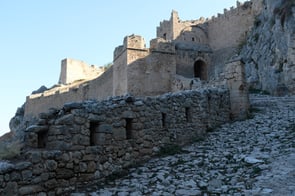
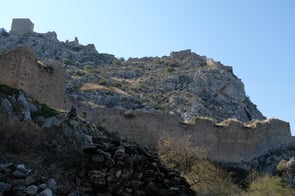
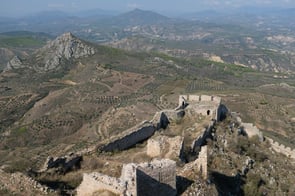
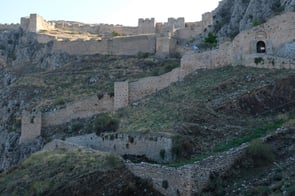
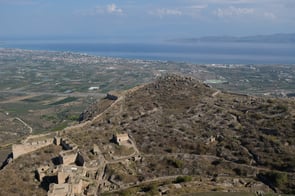
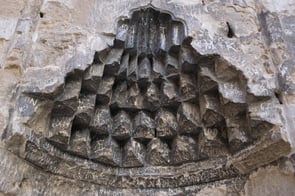






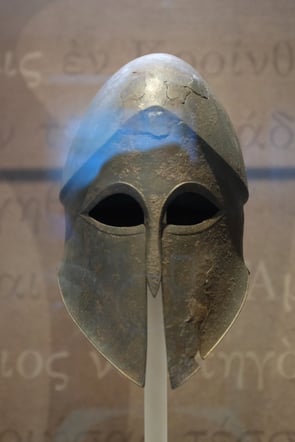
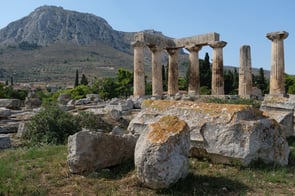
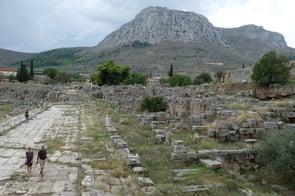
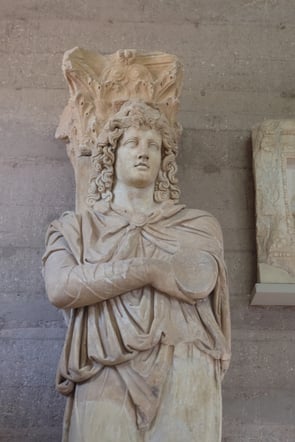




Open air ancient history
Leaving the old and new Corinth behind we drove south for Epidavros (or Epidaurus) in Greece's Argolis region. In ancient times this was the centre of the cult of Asclepius, the god of healing. His temple at Epidavros, the Asclepeion, was the most famous healing centre in the Greek world and a site of pilgrimage for the ill. The ruins of this ancient retreat still have a refreshing feel about them; cool, pale masonry cushioned in greenery.
That blend of architecture and nature has its high point in the city's theatre. Capable of seating up to 14,000 people, the 55 rows of the stands look down onto the green of the valley beyond the stage. As easy as it all is on the eyes, the real treat here might well be for the ears. Thanks to the painstaking geometry and the limestone composition of the structure, the theatre boasts exceptional acoustics; something as subtle as a match struck at centre stage can be heard even from the back row. I thought that was a cute exaggeration until a tour guide demonstrated, clapping and then tearing pieces of paper, first a little out from the centre, then closer and closer again until she was right in the middle. Several tourists afterwards plucked up the courage to sing a few bars from the spot.
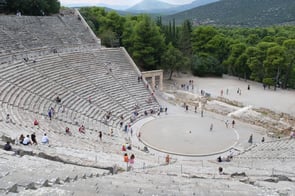
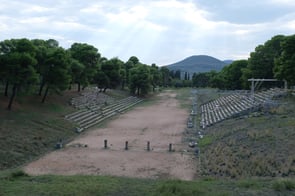
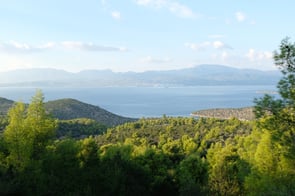
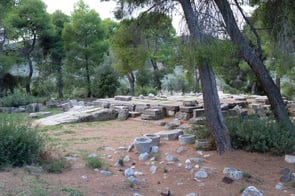




Top: Views at Epidavros. Bottom: Asclepeion ruins
On a separate day-trip from Corinth we took a bus to the seaport of Nafplion on the Argolic Gulf. This is an idyllic Mediterranean town with strong echoes from Greece's medieval and early modern history. It was long a fortress of the Venetians, who called it Napoli di Romania. We're some distance here from today's Romania, but at that time the word referred to the Byzantine Empire, which was in fact nothing less than the continuation of the Roman Empire in the Greek-speaking East. The Venetians repulsed attacks from the Ottoman Empire here on two occasions, and from two of its most capable sultans at that. The first was Mehmet the Conqueror, who had ended the Byzantine Empire only a few years previously by taking Constantinople, and the second was Suleiman the Magnificent, who famously shattered European armies all the way to the gates of Vienna. In spite of themselves they failed to take Nafplion, but their successors finally overcame it in 1540. The Turks would call the city Mora, after the Morea. A century and a half later the Venetians returned to recapture the settlement. They held on to it for only thirty years, but during that time they built the remarkable castle of Palamidi on a steep hill north of the old town. In the nineteenth century, some of the most dramatic episodes of the Greek war of independence were played out here with a withering siege of the last Ottoman garrison, the establishment of the first capital of independent Greece, and the assassination of the new nation's founding father, Ioannis Kapodistrias. All of this turmoil remains physically embodied in Nafplion's stout fortifications, the battlements stamped with the winged Lion of Saint Mark, symbol of Venice, the high castle looming down from the hill and the picturesque little water castle of Bourtzi in the bay. With that though nothing is taken away from the calm of the place and its cool maritime climate, which make Nafplion a great spot to rest up after the heat of Athens and a march around the sights of the Peloponnese. We didn't get to climb up to Palamidi but we still caught some great views at a lower elevation from the walled old town. The sea was like glass, and a dreamy blue against the bright greens and browns of the land.
Naples of the East
On the train back over the isthmus Dad managed to catch a glimpse of the canal. Near enough to the path of the ancient Diolkos, this modern construction cuts the Peloponesse, the Morea, off from the mainland with a thin ribbon of blue navigable water. It's a steep-walled, distinctly artificial intrusion into the scenery, but its mild colours give a squirt of relief to the parched palette of the landscape. At the time of our visit, the views from the train were frequently not just baked brown, but burnt black; the aftermath of the wildfires that had ravaged Attica the previous July leaving many dead, including an Irishman. The train blinks over the canal in a few seconds, and this time it was my turn to miss it. I was daydreaming, turning a sherd of pottery over in my pocket. That was a little souvenir I'd picked from the old Greeks of the Illiad, of Mycenae and Tiryns. Those two are at the top my list of great experiences in the Peloponnese, but that's a story for later.
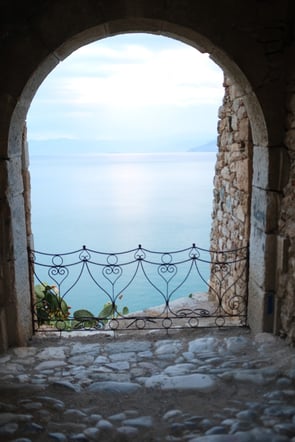
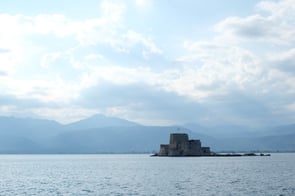
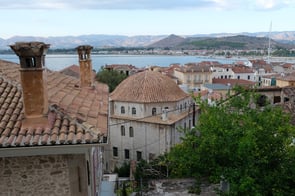
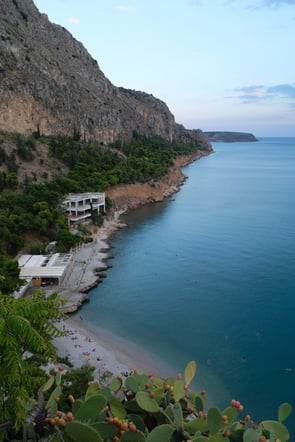




The Gist: Corinthia and Argolis
ARRIVED: We travelled to Corinth by train, on the Athens-Kiato line. It's a one hour journey from Athen's central railway station.
SLEPT: We found very comfortable and affordable accommodation and a great host through Airbnb. Always check your host's previous reviews and establish contact with them before you travel.
DID: Our host Vasilis took us on a day trip by car to the castle of Acrocorinth, the ruins of ancient Corinth, and Epidavros in the Argolis region to the south. Also in Argolis, we visited Nafplion by bus from Corinth. Not described in this post, we also visited the archaeological sites of Mycenae and Tiryns from Corinth.
LEFT: We returned to Athens by train.

